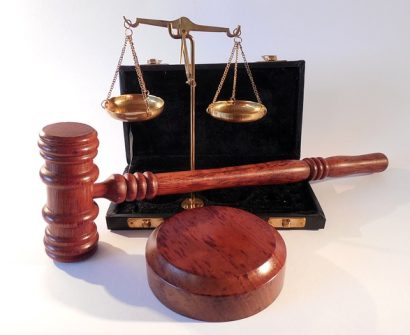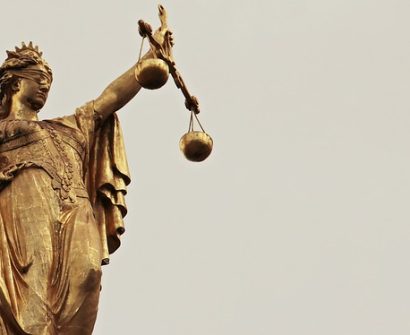
Introduction
The Indian judiciary, often hailed as guardian of justice and equality, has been entrusted with the responsibility of upholding the principles enshrined in the Constitution. However, a critical issue that continue to persist is the underrepresentation of women within the esteemed institution. This article explores the proportion of women at different levels of the judiciary, reasons for that, highlighting their contributions and the reasons why they make exceptional judges.
Proportion of Women in the Indian Judiciary
The representation of women in the Indian judiciary is a pressing concern that demands immediate attention. At all levels of the Court, the representation remains low. At the Supreme Court level, currently, only three out of the 34 judges in the Supreme Court are women, namely, Justice Hima Kohli, Justice Bela Trivedi and Justice B V Nagarathna accounting for nearly 9% of the total strength. This figure doesn’t seem modest, though reflects improvements.
At the High Court level too, the proportion of women judges is not praiseworthy. As of now, approximately only 28% of the total judges in the High Courts are women. This glaring gender imbalance raises questions about the inclusivity and diversity within the judicial system.
However, when we consider the lower judiciary, some progress is made. The proportion of women judges in the lower judiciary especially at the entry level is getting higher. The judiciary exams that are conducted to recruit the women at the lower judiciary have seen a large number of women not only participating but also clearing the exams in large number.
Why there is underrepresentation of women in judiciary?
1. Historical Barriers: The Indian judiciary has historically been male-dominated, stemming from societal norms and cultural biases that have hindered women’s access to education and professional opportunities. This lack of representation perpetuates a cycle where women are discouraged from pursuing legal careers.
2. Stereotypes and Discrimination: Deep-rooted gender stereotypes and biases continue to plague the legal profession, making it challenging for women to break through barriers and reach leadership positions. These stereotypes often question women’s competence, commitment, and ability to balance family responsibilities with their professional duties.
3. Limited Recruitment Efforts: The process of appointing judges needs to be more proactive in promoting gender diversity. Transparent and merit-based selection procedures should be adopted to ensure equal opportunities for both men and women. Additionally, sensitization programs within the legal fraternity can help eliminate unconscious biases during recruitment.
4. Lack of Support Systems: Inadequate support systems, such as maternity leave policies, childcare facilities, and flexible work arrangements, pose significant challenges for women in the legal profession. These barriers often force talented and ambitious women to choose between their career and personal life, leading to a loss of potential talent within the judiciary.
Why Women Make Better Judges
1. Empathy and Sensitivity: Women possess innate qualities of empathy and sensitivity that enable them to understand and connect with diverse perspectives. These qualities allow them to grasp the nuances of cases involving social issues, domestic violence, and gender discrimination, thereby delivering more compassionate and just judgments.
2. Diverse Perspectives: Women bring unique life experiences and perspectives to the bench, enriching the overall decision-making process. Their presence ensures a broader range of viewpoints, leading to more comprehensive and balanced judgments that reflect the needs and concerns of all sections of society.
3. Breaking Stereotypes: Women judges challenge traditional gender roles and stereotypes, inspiring countless others to pursue a career in law. Their presence on the bench serves as a powerful symbol of gender equality and encourages women to believe in their capabilities, fostering a more inclusive legal profession.
Landmark Judgments by Women
Justice Fathima Beevi : In 1989, Justice Fathima Beevi became the first woman judge in the Supreme Court of India. Her notable judgment in the case of Mohammed Ahmed Khan v. Shah Bano Begum paved the way for Muslim women’s rights by recognizing their entitlement to maintenance beyond the period of iddat (a waiting period after divorce).
Justice Ruma Pal: Justice Ruma Pal made significant contributions during her tenure at the Supreme Court. In the case of Vishaka v. State of Rajasthan (1997), she played a pivotal role in formulating guidelines for preventing sexual harassment at workplaces, establishing a landmark precedent for women’s rights in India.
3. Justice Gita Mittal: As the first woman Chief Justice of Jammu and Kashmir High Court, Justice Gita Mittal has been instrumental in initiating legal reforms to address gender-based violence and improve access to justice for women in conflict-ridden regions.
Conclusion:
Factors such as societal norms, gender biases, and limited opportunities for career advancement often hinder the entry and promotion of women in this domain. Recognizing this disparity, efforts should be made to encourage more women to join the lower judiciary and address the gender gap.
By encouraging more women to join the legal profession and providing equal opportunities for career advancement, we can further strengthen the judiciary and promote a more inclusive and diverse justice system.
Significance of the Topic
The underrepresentation of the women at the various levels of the Government like Legislative, executive and judiciary remain a great cause of concern. Though through a recent Act, i.e. Women Reservation Act, 2023, efforts are made to enhance this dismal representation of women, however, there some progress is to be made in the judiciary too. This makes it a topic of contemporary relevance. Judiciary coaching in Jaipur, therefore, highly recommends this topic to be covered by the judiciary aspirants. Also, judiciary coaching suggests that the topic may be prepared with the essay perspective.










